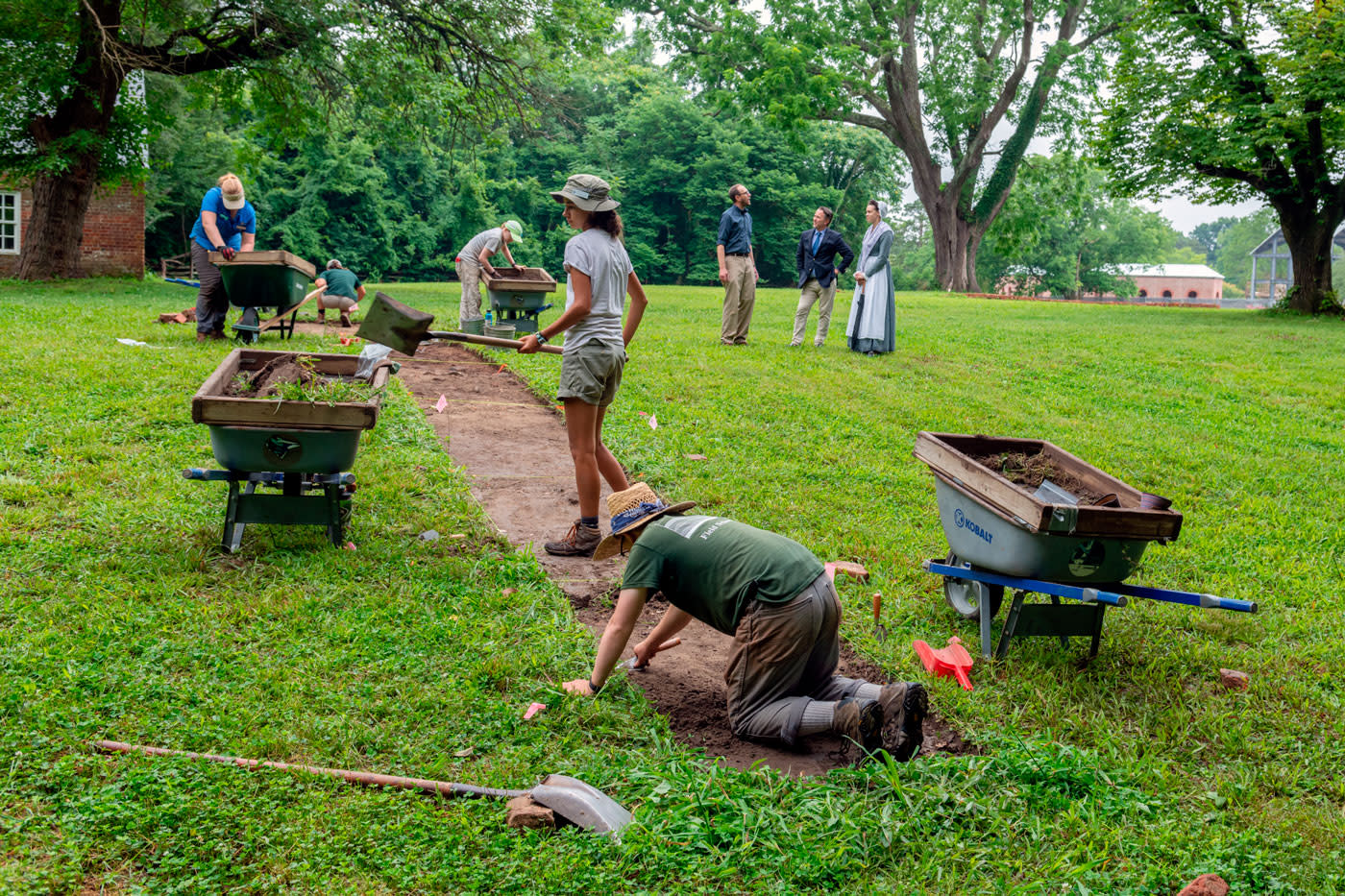How Archaeological investigation deepens our understanding of historical research
Archaeological investigation has been ongoing at Colonial Williamsburg since 1928. Each decade since has offered new ways to examine old artifacts as scientific advances and sociological perspectives provide fresh insight. Active digs in the Historic Area give guests an opportunity to watch the process, ask questions, and participate in the unfolding discoveries.
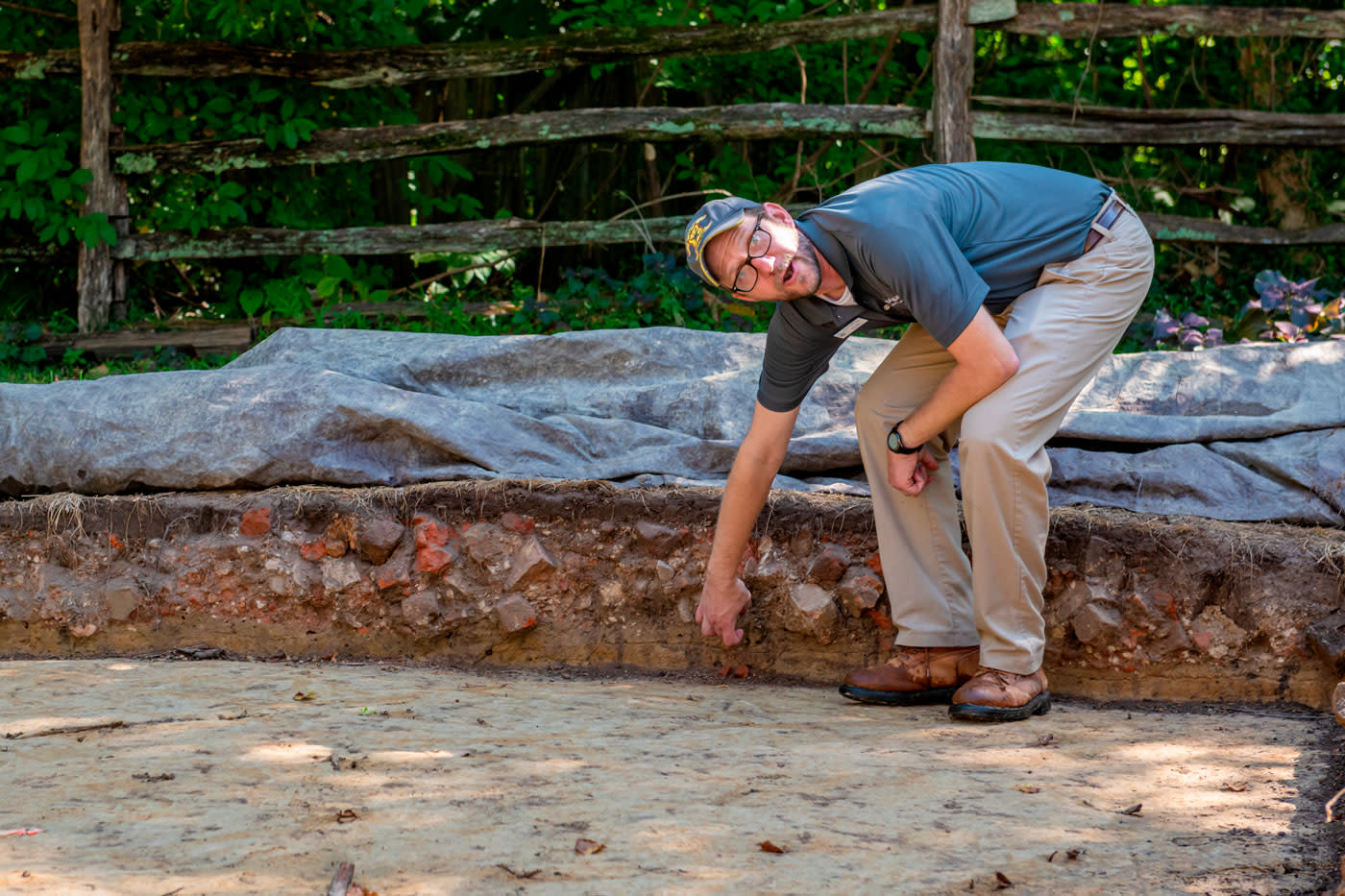
Connecting With the Past
History is an abstract concept without artifacts to bring its reality close. Discarded, lost, or long-hidden tools and treasures from centuries past can summon the imagination like no written history can. When we behold the button that a fumbling soldier fastened in a dim barracks before riding to battle or the bottle that held a night’s wine, we are connected to the animated experiences of people not so different from ourselves in a time not so different from our own. Archaeology can people the ghost of a town with an ever-widening picture: children, women, tradesmen, and enslaved men and women who undergirded the workings of the city.
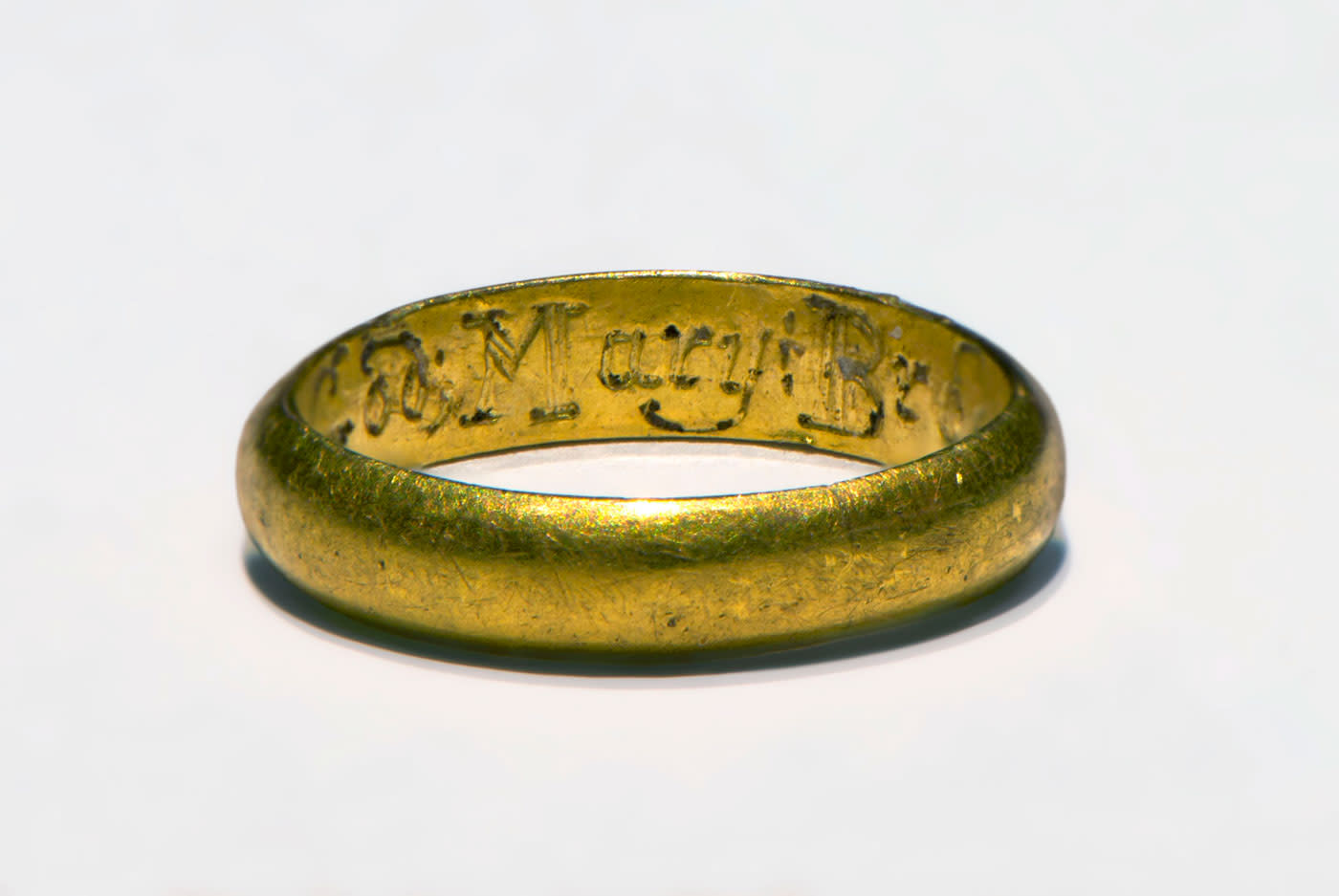
Fear God, Mary Broadnax
A small girl was playing in the grass while visiting friends behind Marot’s Ordinary in Williamsburg, perhaps picking buttercups or watching ants. A ring fell from her finger – a simple gold band engraved with the admonishment: “Fear God, Mary Broadnax.” Mary, whose father was a Williamsburg goldsmith, never saw her sweet little ring again. Leaves fell and covered the tiny bauble, dust blew over it on the dry days, and rain soaked it all into a slurry. So it happened that little Mary’s ring was covered deeper and deeper each season for hundreds of years until it lay buried several inches below the foot of anyone who walked above.
Gold doesn’t tarnish. When Colonial Williamsburg archaeologists discovered the ring’s glint through the dirt, the shine reflected back into their eyes was the same flash that young Mary saw as it slipped from her hand 200 years hence. As they cleaned and studied the ring, archaeologists worked with the awareness that their hands cradled a treasure last clasped by a person turned to dust long ago. They listened as it told its tale: a well-loved girl whose family placed a gentle reminder of piety on the hand of a child, a religious tradition with long English roots, and a daughter whose busy fingers slipped archaeologists a treasure from across the centuries.
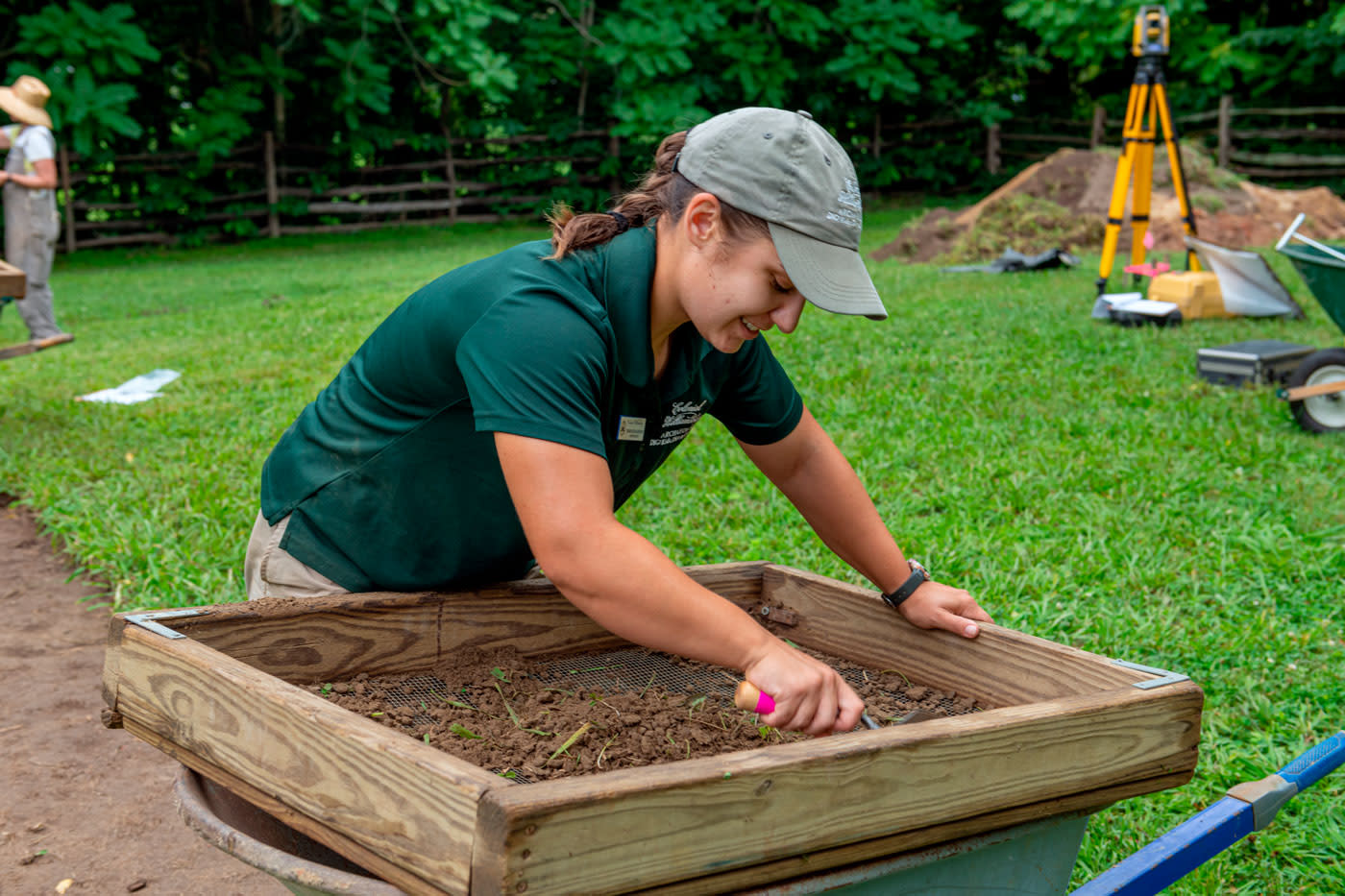
Tracking Subtle Clues
At Colonial Williamsburg, archaeology is a vigorous, ongoing pursuit of small evidences traced through scant trails. Maps, diaries, libraries and records all contribute to an unfolding narrative. Here, experts in research and interpretation lead the field in synthesis and technique, inspiring young guests at active digs and providing formal training in a higher-education setting at the nearby College of William & Mary.
Though the earliest archaeological explorations began in 1928, the 30-acre Historic Area is only considered 15-20 percent excavated. New technologies on the cutting edge of scientific investigation coax unexpected intelligence from the smallest seed, and radar echoes through layers of history that never imagined such a future. These innovations, coupled with time-tested shovels and screens allow scholars to return to old sites with new questions.
Custis Square Project
Ongoing excavations throughout the Historic Area make archaeologists available to answer questions and share ideas with visitors almost any day of the week. At Custis Square, a donor gift has made possible a long-term study of the grounds around the home of Martha Washington’s first father-in-law, John Custis. Investigations into the horticultural landscape and the dynamics of the enslaved community on the site will yield opportunities for guests to interact with discovery in process for years to come.
A deeper sensitivity to the stories of the lives lived in the Williamsburg of the past includes finding opportunities to be accountable with populations historically marginalized or discounted. Partnerships with Native American and African descendant communities have produced meaningful inquiries into the lived experience of individuals whose stories are just beginning to be told.
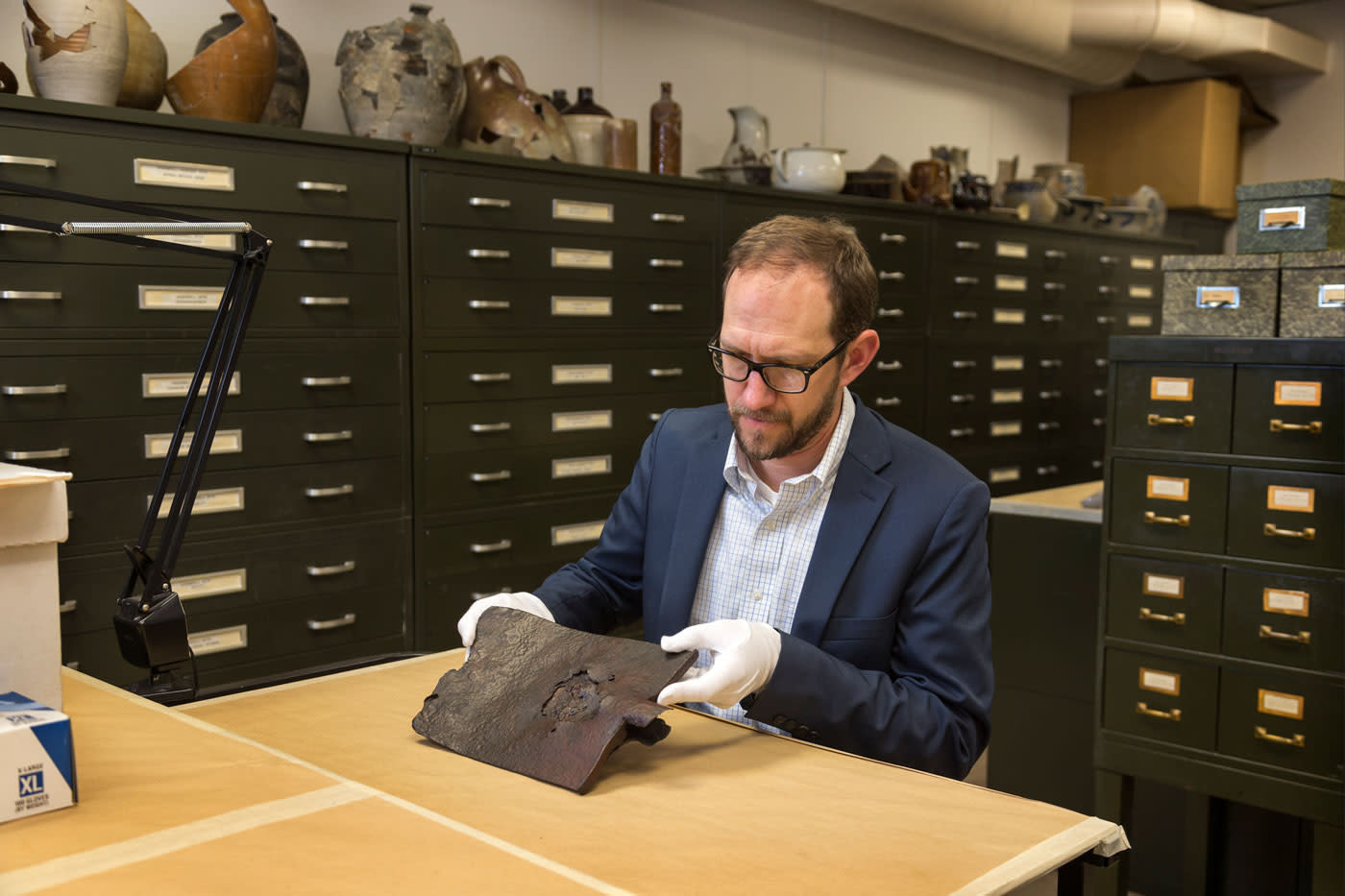
An Open Process
“Openness” might well be considered the watchword for the practice of archaeology at Colonial Williamsburg. Since 2009, webcams, blogs, and social media have invited a curious public to look closer at the work that staff archaeologists do in a day. This open dialogue has allowed a vibrant interaction between Williamsburg and its guests: clearing misconceptions, sharing milestones, and investing a new generation in the possibilities for discovering of the past.
New tools pave the way for new insights; but our curiosity to deepen our understanding of what came before never changes. Emerging scientific techniques continually deepen the archaeologist’s understanding of the evidence people leave behind. And at Colonial Williamsburg, it’s happening all the time.

